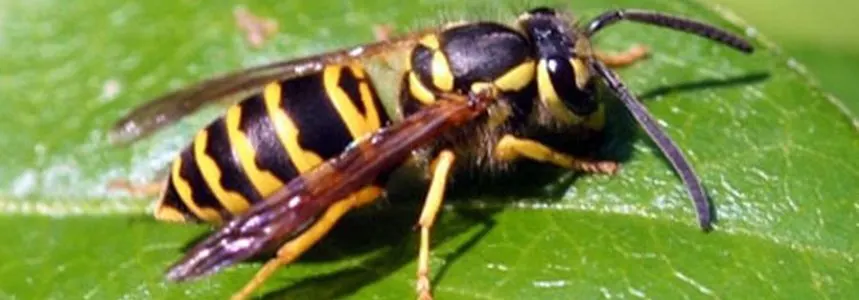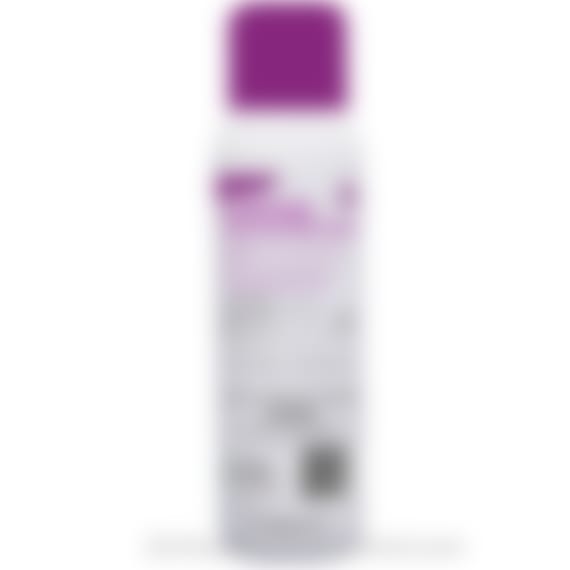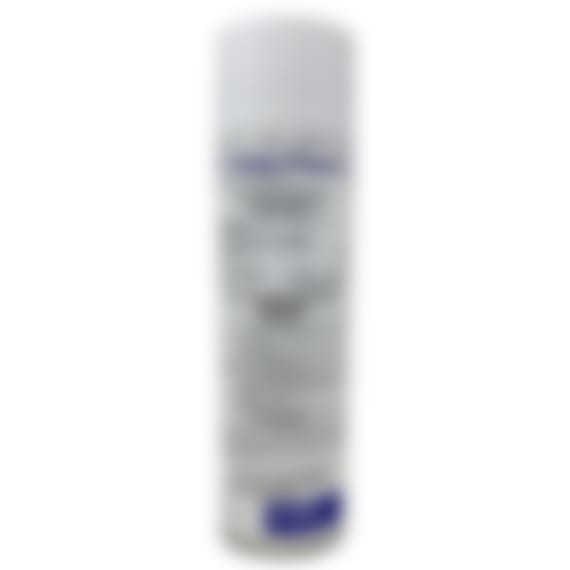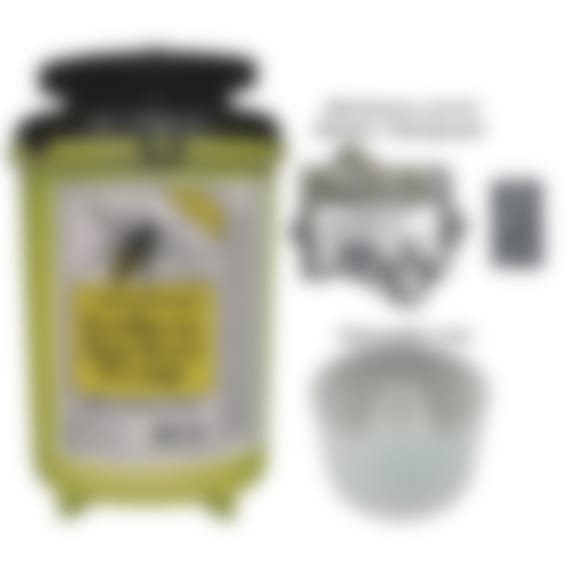
How to Get Rid of Yellow Jackets
Discover the best methods for Yellow Jacket Nest Removal and How To Get Rid of Yellow Jackets Safely.
If you stay away from their hive, Yellow jackets don’t pose much of a threat. However, if they build nests in your yard or around your home, these insects can become much more of a problem.
The good news is, you can control a yellow jacket infestation without hiring a professional. This article will teach you how to identify Yellow Jackets, how to get rid of a yellow jacket nest, and how to prevent them from starting a new colony in the future.
December 16th, 2023
How to Get Rid of Yellow Jackets
Step 1: Locate Yellow Jacket Nests
Nests should be located during the day so that you can identify the workers entering and exiting the entry points. Yellow Jackets tend to be most active during the day. Look for multiple entry points and mark them for later.
-
Yellow Jackets are most active during the hottest part of the day, so inspect for the nests at that time.
-
If they have made an underground nest, you may see small holes with the workers entering and exiting.
-
Mark the entry points.
-
Treat at night, when the Yellow Jackets are least active.
Step 2: Get rid of Yellow Jacket Nests
When attempting to get rid of Yellowjackets, do it at night, when it is dark outside. Yellow Jackets do not see well, and the chances of being stung are significantly reduced. Also, at night the whole colony will be present in the yellow jacket nest, making the treatment more effective. When getting rid of these stinging insects, it's a must that you wear protective clothing.
-
Treat the nest with pyrethrum aerosols such as Stryker 54 Contact Aerosol or PT 565. Pyrethrum forms a gas that will fill the cavity, killing the Yellow Jackets instantly.
-
Wait until the aerosol is dry (10-15 minutes), then dust the Yellow Jacket nest, entrance, and surrounding areas with an insecticide dust. The dust will prevent future hatch-outs.
-
Use Tempo Dust (top choice for flying insects), Evergreen Dust (a speck of botanical insecticide dust), or D Fense Dust.
-
Check the nest the following day to see if the Yellow Jackets are dead, which can be verified by lack of activity. Repeat, if necessary.
Extra Tip for Getting Rid of a Yellow Jacket Nest
When spraying the aerosol or using the dust in hard-to-reach areas, the Gotcha Sprayer Pro Adaptor fits on a standard extension pole to reach areas where a ladder is required.
For best results, use Walt's Yellow Jacket Kit (Stryker 54 and Tempo Dust).
Key Takeaway
Regardless of the insecticide being used, or the nest location, treating a Yellow Jacket nest after dark will greatly reduce your chances of being stung.
How to Kill Yellow Jackets
1. Baiting Yellow Jackets
The Alpine Yellow Jacket Bait Stations are designed to be used with Onslaught Insecticide. You supply the station with fresh meat and the Onslaught.
The Yellow Jackets are lured into the bait station; they ingest the meat/insecticide mixture, killing the Yellow Jackets.
This baiting system is used during the spring and summer months for the most common Yellow Jackets. This includes the scavenger Yellow Jackets that consume protein and meat. During the fall months, other Yellow Jackets may prefer carbohydrates instead of meat.
2. Trapping Yellow Jackets
Yellow Jacket traps are useful when you can not locate a nest but still want to eliminate Yellow Jackets. Use the Advantage Yellow Jacket Trap with a lure like fruit juice or meat. This trap is very helpful during picnics and cookouts by drawing them away from you and killing Yellow Jackets that enter the trap.
Using Yellow Jacket Traps
Place the trap away from where you are going to be; you want to lure them into the trap.
Meat works best for lures early in the season, and fruit juice works well later in the summer and fall months.
3. Care and Caution
With a little care and caution, you can get rid of Yellow Jackets easily and safely.
-
Treat nest directly at night
-
Hang traps or bait stations away from children, people, and animals.
Yellow Jacket Identification and Habits
-
Size: 5/8 to 1 inch
-
Color: Black and Yellow or Black and White
-
They have a thin waist, in contrast to a bee.
-
Yellow Jackets are of the Vespula species and are social wasps.
-
Several thousand workers can be produced in a colony in one season.
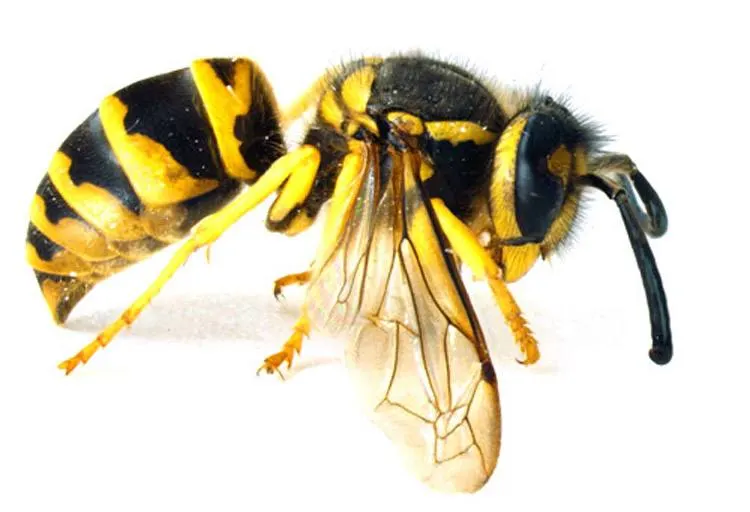
Eastern Yellow Jacket
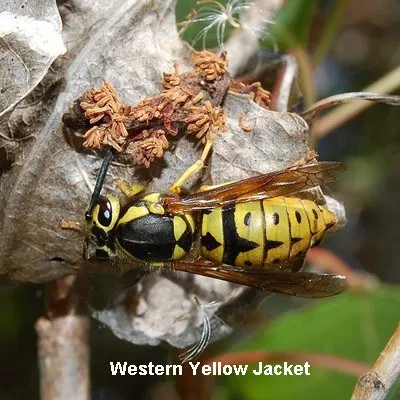
Western Yellow Jacket
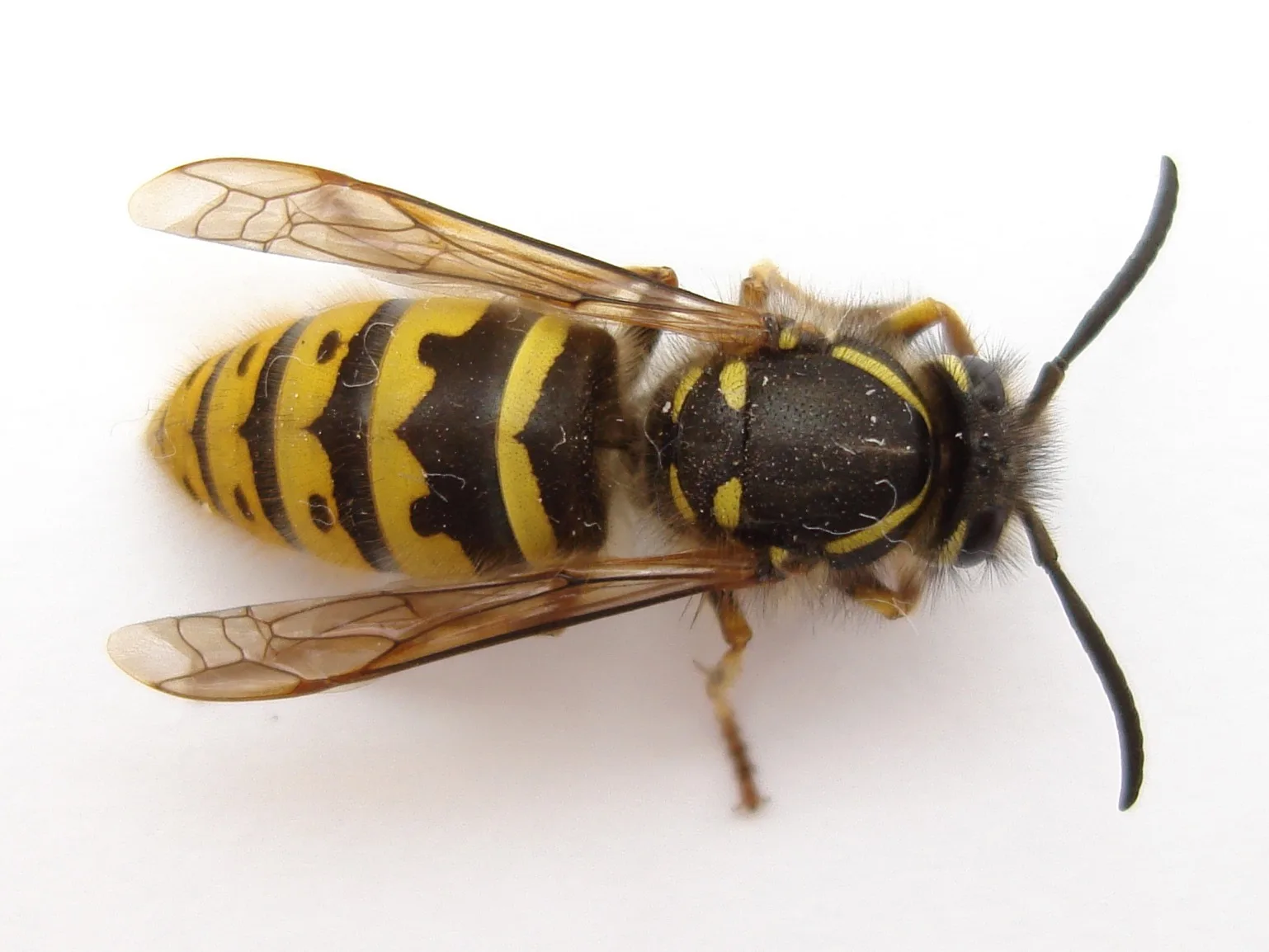
German Yellow Jacket
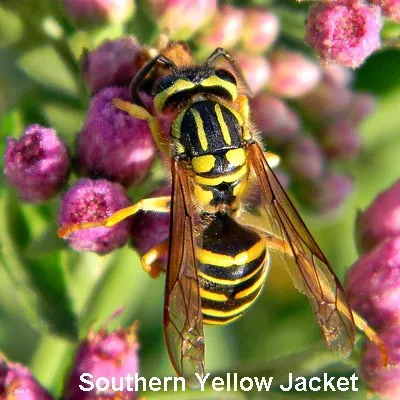
Southern Yellow Jacket
(photograph by Jacopo Werther, Flickr)
Yellow Jacket Biology
Like all wasps, Yellow Jackets prey on a variety of insects and other arthropods. Yellow Jackets feed on and forage for foods that people eat, especially sweets and meats. Fruit juices and other sweet-smelling food attracts Yellow Jackets. Yellow Jackets are considered beneficial insects because they eat other insects. However, they are a nuisance to people because they are aggressive and leave painful stings.
The Yellow Jacket colony will remain active for only one summer. The queens will fly away to start more colonies, and the remaining wasps die at the end of the season. The nest is not reused (with the occasional exception of German Yellow Jackets).
There are several Yellow Jackets in the USA; the western Yellow Jacket is the most common type, found in the northern temperate climates.
Do Yellow Jackets Live in the Ground?
Yes, both the Western and Eastern Yellow Jackets build their nests underground. Ground nests are frequently located under bushes and shrubs, logs, landscape timbers, and other protected areas. Entrance holes may have bare dirt around them.
Yellow Jackets Are Aggressive
All wasps will defend their nests, but Yellow Jackets and hornets are the most aggressive. If a colony is disturbed, the Yellow Jackets can become very aggressive and sting. Make sure to inspect for a Yellow Jacket nest before mowing the lawn or using trimmers.
For most people, Yellow Jacket stings are temporary but painful. However, for allergic individuals, a single Yellow Jacket sting may result in a serious reaction that requires medical treatment.
Types of Yellow Jackets and Yellow Jacket Nests
Before you learn how to get rid of Yellow Jackets, proper inspection is very important. To successfully get rid of Yellow Jackets from around the home, you must be able to clearly identify them. If you notice a few Yellow Jackets hovering around your home, there's a good chance a nest is located nearby. Yellow Jackets nest in different areas around your home. When inspecting your property, look for:
1. Yellow Jacket Nests found in structures
The German YellowJacket, which originated in Europe, is located across the northeastern and midwestern regions of the USA. It is widely distributed throughout much of the temperate areas of the USA.
The German YellowJacket has been a threat to the beekeeping industry. An entire colony of bees can be destroyed by aggressive workers.
The German YellowJacket usually nests in structures, wall voids, crawlspaces, attics, and cracks and crevices in the exterior surface of a building. Similar to paper wasps, these Yellow Jackets make nests of paper from fibers in wood and saliva and can be hard to get rid of. The German YellowJacket will reuse the previous year's nest, so if you spot one of these nests around your home, be sure to remove it.
2. Yellow Jackets Nests found in the ground
Do these flying insects live in the ground? Yes, some species do. The Western Yellowjacket (Vespula pensylvanica) and Eastern Yellow Jackets ( Vespula maculifrons ) make their nests in the ground.
Yellow Jackets use rodent burrows for nests, enlarging the cavity as the colony develops. You can see small stones or dirt particles piled up around the openings of a burrow that is used to house a large Yellow Jacket colony. They will often use other material near ground level that has available openings, such as railroad ties or concrete blocks.
It can be hard to get rid of Yellow Jackets that have built their nests underground. But with the correct Yellow jacket removal and prevention tactics, your infestation will ease.
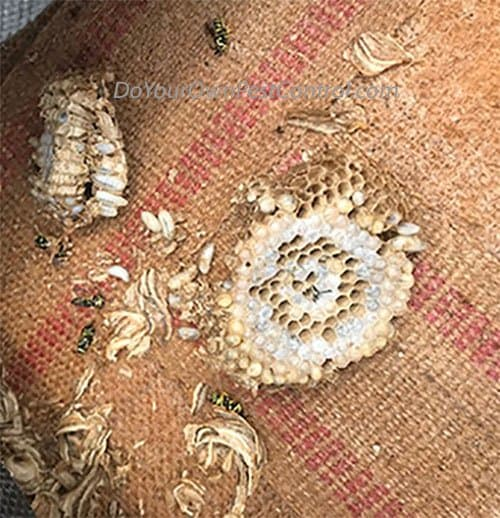
3. Yellow Jackets Nests found in both structures and ground
The common YellowJacket, Vespula Vulgaris, occurs in many states of the USA. They construct both above-ground and below-ground nests. The Eastern YellowJacket mostly has ground nests, but an aerial nest does occur. The Southern YellowJacket (Vespula squamosa) has both aerial and terrestrial nests.
4. Yellow Jacket Aerial Nests
Some Yellow Jackets (D. areanara and D.maculata) build aerial nests hanging from a tree or attached to the eaves of buildings. These Yellow Jackets are not as aggressive. Use the Structural Yellow Jacket Kit in these situations.
Prevent Yellow Jackets
Yellow Jackets (along with bees, wasps, and hornets) in our yards and landscapes are beneficial insects, but they can be a nuisance, and to some, a serious health hazard. That's why you'll want to prevent yellow jackets before they become a problem.
In many cases, you can avoid a Yellow Jacket problem in the summer by doing three things:
1. Remove Yellow Jacket Nests during Spring
If you seem to have Yellow Jackets year after year, inspect the area in the late spring/early summer so that you can locate and treat any newly formed nests.
If you think you have found a nest, watch the opening to see if the Yellow Jackets are coming and going. Nests can occasionally be found in hollow posts, play equipment, and under outdoor tables and chairs.
2. Eliminate Yellow Jackets Possible Food Sources
Another method of getting rid of Yellow Jackets is to limit their access to food. Any food left outdoors, open trash cans, or uncovered compost piles should be removed or covered.
Yellow Jackets will remember the location of food sources and will return to search that area again and again. Trash cans should have tight-fitting lids and should be emptied and cleaned frequently.
3. Use Traps to Prevent and Get rid of Yellow Jackets
Trapping is another important tool in preventing and killing Yellow Jackets. It will not eliminate Yellow Jackets, but can greatly reduce their numbers. Traps are baited with an attractant and will allow Yellow Jackets to enter, but not escape.
It is important to place traps around the perimeter of the area you want to protect so that you draw the Yellow Jackets away from that area. Be aggressive and use plenty of traps. Empty the traps and change bait frequently to ensure significant Yellow Jacket population reduction. Remember to always place traps out of reach of children.
Following these three steps in the spring and early summer should lead to fewer encounters with these insects later in the year. Prevention is key to creating a more permanent solution to your Yellow Jacket problem.
Here is an excellent video from the University of California describing the difference between yellow jackets, wasps, and mud daubers.
How to Get Rid of Yellow Jackets
Yellow Jacket Nest Removal and How To Kill Yellow Jackets Safely
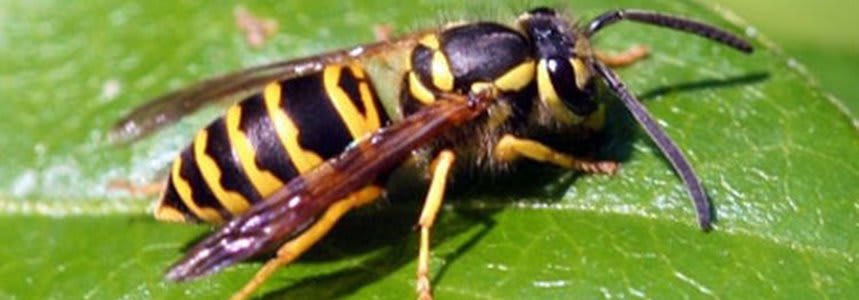
Yellow Jacket Control Steps
Locate and Eliminate Yellow Jacket Nests
A. Sanitation ( to eliminate possible food sources)
Sanitation is important to reduce the foraging population's build-up during the summer to mid-autumn. Trash containers should be kept closed, and open containers should be emptied regularly.
B. Killing The Nest
Locate Nests: Nests should be located during the day so that you can identify the workers entering and exiting the entry points. Look for multiple entry points and mark them.
- Yellow Jackets are most active during the hottest part of the day, so inspect for the nests at that time.
- If they have made an underground nest, you may see small holes with the Yellow Jacket workers entering and exiting.
- Mark the entry points
- Treat at night, when the Yellow Jackets are least active.
Treatment: Only treat at night when it is dark. Yellow Jackets do not see well, and the chances of being stung are significantly reduced. Also, at night the whole colony will be present in the nest, making the treatment more effective.
- Treat the nest with pyrethrum aerosols such as Stryker 54 Contact Aerosol or PT 565. Pyrethrum forms a gas that will fill the cavity, killing the yellow jackets on contact.
- Wait until the aerosol is dry, and then dust in the opening with insecticide dust such as Tempo Dust. The dust will prevent future hatch outs. Dust the nest, entrance, and surrounding areas. Check the nest the following day to see if the yellow jackets are dead, which can be verified by lack of activity. Repeat, if necessary.
- Spray opening at night with pyrethrin aerosol (Stryker 54 or PT 565).
- Wait until aerosol is dry (10-15 minutes), then dust opening with Tempo Dust (top choice for flying insects), or D Fense Dust.
- For spraying the aerosol or using the dust in hard to reach areas, the Gotcha Sprayer Pro Adaptor fits on a standard extension pole to reach areas that a ladder is required.
- For best results, use Walt's Yellow Jacket Kit (Stryker 54 and Tempo Dust).
Products to Eliminate Yellow Jacket Nests
Using Aerosols and Dusts to Get Rid Of Yellow Jackets
Follow the treatment plan outlined above.
- Tempo Dust
- Stryker 54 Contact Aerosol
- Walt's Yellow Jacket Kit-This yellow jacket kit has everything that you need for a complete job in a structural setting or ground setting.
Using Yellow Jacket Baits in Bait Stations
The Alpine Yellow Jacket Bait Stations are designed to be used with Onslaught Insecticide. You supply the station with fresh meat and the Onslaught.
- The yellow jackets are lured into the bait station; they ingest the meat/insecticide mixture, killing the yellow jackets.
- This baiting system is used during the spring and summer months for the most common yellow jackets. This includes the scavenger yellow jackets that consume protein and meat.
- During the fall months, yellow jackets prefer carbohydrates instead of meat.
Using Yellow Jacket Traps
Yellow Jacket Traps are useful when you can not locate a nest. Use a lure like fruit juice or meat with Advantage Yellow Jacket Trap. This trap is very helpful during picnics and cookouts by drawing them away from you.
- Place the trap away from where you are going to be; you want to lure them in the trap.
- The traps come with a lure. However, meat works best early in the season, and fruit juice works well later in the summer and fall months.
How To Treat Yellow Jackets Safely
Key Takeaway
Regardless of the insecticide being used, or the nest location, treating yellow jacket nests after dark will greatly reduce your chances of being stung.
Care and Caution
With a little care and caution, yellow jackets can be easily and safely eliminated.
- Treat nest directly at night
- Hang traps or bait stations away from children, people, and animals.
All wasps will defend their nests, but Yellow Jackets and hornets are the most aggressive. They can be distinguished from bees by their thin "waists." Bees are thick-wasted. Yellow Jackets fold their wings lengthwise when at rest. If a colony is disturbed, the Yellow Jackets can become very aggressive and sting. Make sure to inspect for yellow jacket nests before mowing the lawn or using trimmers. For most people, the yellow jacket sting is temporary but painful. However, for allergic individuals, a single sting may result in a serious reaction that requires medical treatment.
Yellow Jacket Identification and Habits
- Size: 5/8 to 1 inch
- Color: Black and Yellow or Black and White
- They have a thin waist, in contrast to a bee.
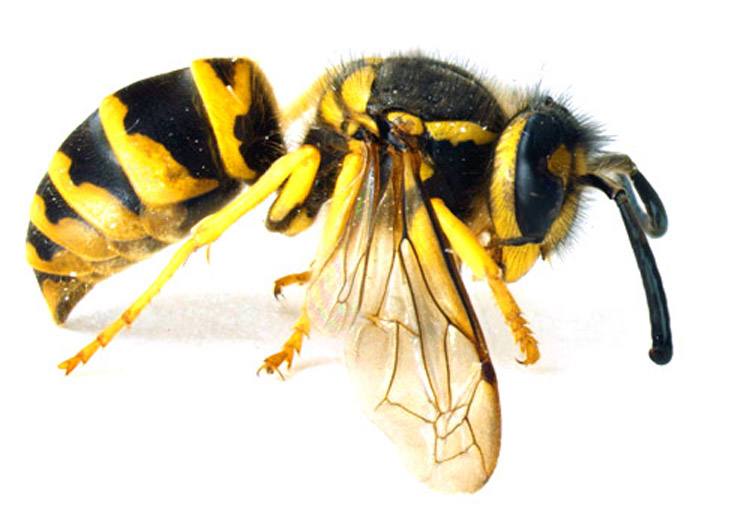
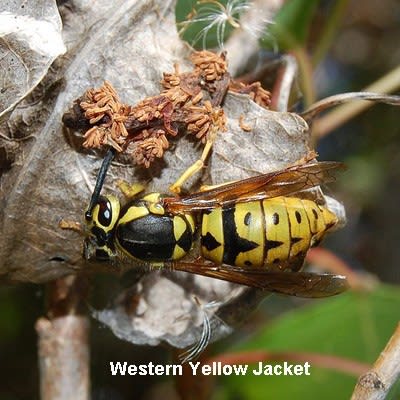
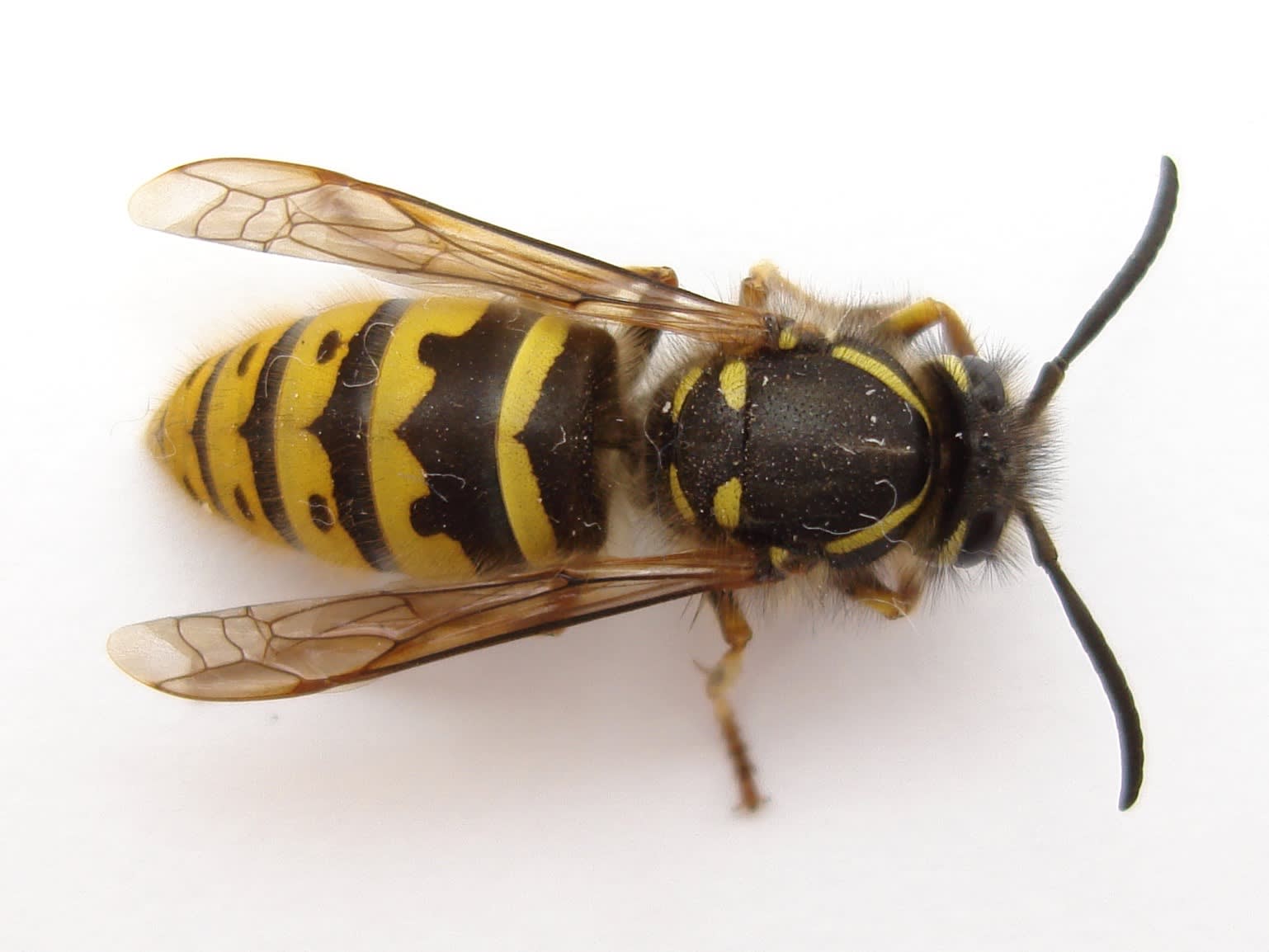
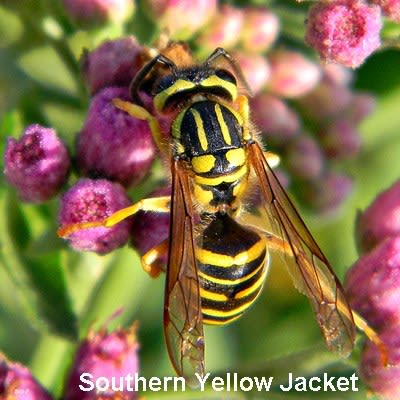
Like all wasps, yellow jackets prey on a variety of insects and other arthropods. Yellow jackets will also forage on foods that people eat, especially sweets and meats. Yellow jackets are considered beneficial insects because they eat other insects. However, they are a nuisance to people because they are aggressive and leave painful stings. There are several yellow jackets in the USA; the western yellow jacket is the most common type, found in the northern temperate climates. The yellow jacket colony will remain active for only one summer. The queens will fly away to start more colonies. The remaining ones die at the end of the season. The nest is not reused (with the occasional exception of German yellow jackets).
Yellowjacket Habits
Yellow Jackets are of the Vespula species and are social wasps. Several thousand workers can be produced in a colony in one season.
Types of Yellow Jackets and Yellow Jacket Nests
Yellow Jackets are of the Vespula species and are social wasps. Several thousand workers can be produced in a colony in one season.
- Yellow jackets found in structures: The German Yellowjacket, which originated in Europe, is located across the northeastern and midwestern regions of the USA. It is widely distributed throughout much of the temperate areas of the USA. The German Yellowjacket usually nests in structures, wall voids, crawlspaces, attics, and cracks and crevices in the exterior surface of a building. The German yellowjacket has been a threat to the beekeeping industry. An entire colony of bees can be destroyed by aggressive workers. These Yellow jackets make nests of paper from fibers in wood and saliva. The German yellowjacket will reuse the previous year's nest.
- Yellow jackets are found in both structures and ground: The common yellowjacket, Vespula Vulgaris, occurs in many states of the USA. They construct both above-ground and below-ground nests. The Eastern yellowjacket mostly has ground nests, but an aerial nest does occur. The Southern Yellowjacket (Vespula squamosa) has both aerial and terrestrial nests.
- Yellow Jackets found in the ground: The Western Yellowjacket (Vespula pensylvanica) and Eastern Yellow Jackets ( Vespula maculifrons ) make their nests in the ground. Many people refer to yellow jackets as "meat bees." Yellow jackets will also use rodent burrows for nests, enlarging the cavity as the colony develops. You can see small stones or dirt particles piled up around the openings of a burrow that is used to house a large yellow jacket colony. They will often use other material near ground level that has available openings, such as railroad ties or concrete blocks.
- Aerial Nests: Some Yellow jackets (D. areanara and D.maculata) build aerial nests hanging from a tree or attached to the eaves of buildings. These yellow jackets are not as aggressive. Use the Structural Yellow Jacket Kit in these situations.
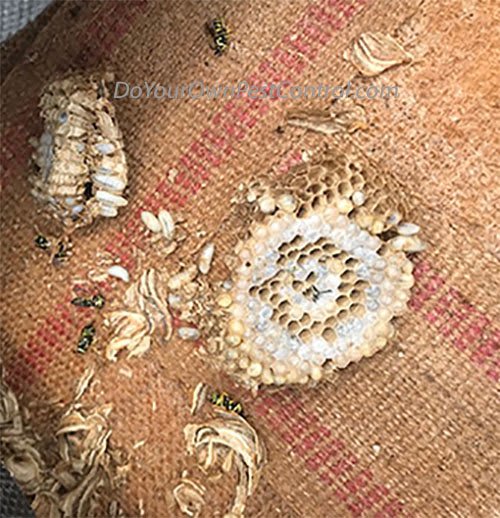
Prevent Yellow Jackets
Yellow jackets (along with bees, wasps, and hornets) in our yards and landscapes are beneficial insects, but they can be a nuisance, and to some, a serious health hazard.
In many cases you can avoid problems with yellow jackets in the summer by doing three things:
- Finding and eliminating nests in late spring and early summer when their numbers are low and their nests are still small.
- Reduce their access to food.
- Trapping yellow jackets.
If you seem to have yellow jackets year after year, inspect the area in the late spring/early summer so that you can locate and treat any newly formed nests. Nests can most frequently be found in the ground but may be under overhangs or in wall voids of buildings. Ground nests are frequently located under bushes and shrubs, logs, landscape timbers and other protected areas. Entrance holes may have bare dirt around them. If you think you have found a nest, watch the opening to see if the yellow jackets are coming and going. Nests can occasionally be found in hollow posts, play equipment, and under outdoor tables and chairs.
Another method of preventing yellow jackets is to limit their access to food. Any food left outdoors, open trash cans, or uncovered compost piles should be removed or covered. Yellow jackets will remember the location of food sources, and will return to search that area again and again. Trash cans should have tight fitting lids and should be emptied and cleaned frequently.
Trapping is another important tool in preventing yellow jackets. It will not eliminate yellow jackets, but can greatly reduce their numbers. Traps are baited with an attractant and will allow yellow jackets to enter, but not escape. It is important to place traps around the perimeter of the area you want to protect so that you draw the yellow jackets away from that area. Be aggressive and use plenty of traps. Empty the traps and change bait frequently to ensure significant yellow jacket population reduction. Remember to always place traps out of reach of children.
Following these three steps in the spring and early summer should lead to fewer encounters with yellow jackets later in the year.
Here is an excellent video from the University of California describing the difference between yellow jackets, wasps, and mud daubers.
Written by our resident pest control expert Ken Martin.




